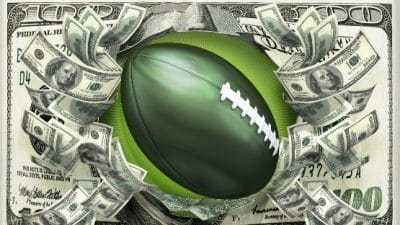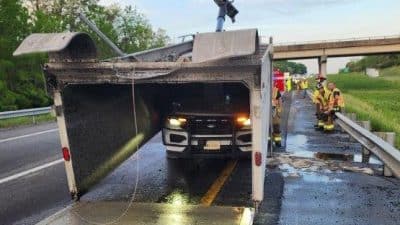
Local sports on WTON-1240AM in Staunton is about to be a thing of the past, with the purchase of the station, along with Star-94.3FM, by Stu-Comm. Inc., the parent company of WNRN, a Charlottesville-based nonprofit radio station.
Whether or not you would’ve ever noticed depends on what media generation you’re from.
Local radio in tiny media markets like ours has been on the wane for the past 20+ years with the advent of satellite radio and the growth of streaming music options and podcasting that gives people who want to listen to music or talk the ability to be their own station manager.
The younger you are, the more likely you are to subscribe to satellite radio, to stream what you want to listen to – and to have never even listened to FM or AM, what some of us call terrestrial radio.
Older folks – I’m raising my hand here – at least remember how things used to be.
I was a 10-year-old hugging a radio on summer nights to listen to Waynesboro Generals games on WANV, then fiddling with the radio dial after the Generals game was over to find the last couple of innings of the Baltimore Orioles game, or a game broadcast on AM from New York, Atlanta or Cincinnati.
And then when I was making my start in the news business, and driving all over the Valley and Central Virginia chasing leads, the early years of sports radio through ESPN that got picked up locally by WTON was what kept me going – The Fabulous Sports Babe, Tony Kornheiser, Dan Patrick and Rob Dibble.
That’s been a while.
Local radio in general is in decline due to the economics of the terrestrial-radio business, with a dearth of local advertisers willing to sign on to help pay the bills.
Sports radio in bigger markets – metros with pro-sports teams, college towns with Power 5 programs – continues to do well, or well enough.
But sports radio in a small market like Staunton-Waynesboro-Augusta County is a niche that was bound to meet its end at some point.
I have a couple of perspectives on WTON, as a former daily show co-host, back in the early ‘aughts, and then as a marketing consultant who had to fend off phone calls from sales reps at the station trying to sell clients a bill of goods.
First, to my on-air experience: I co-hosted a weekday drive-time sports show on WTON with Patrick Hite, the long-time News Leader reporter, for a year, and in addition to the experience being a lot of fun, and one that led to us developing a syndicated weekly show, “ACC Nation,” that continues to this day (with two completely different guys at the controls), it was an education in how the radio business works.
The lesson I take with me to this day: get things down on paper.
We did that show for a year, five days a week, and I got one paycheck out of it, for $79.
The station ran ad spots during our breaks, so somebody was making money – just, not me, which is fine, you live, you learn.
I came to realize over the years that what I’d assumed initially – I was getting screwed! – was actually more, the station just isn’t making any money.
Businesses were already beginning to migrate to putting their marketing dollars into the interwebs, a trend that would take local radio and local newspapers from the position they’d had for decades as being the only game in town to being dinosaurs waiting for the asteroid to finish them off.
This is where my other experience with WTON comes to the fore: AFP, for several years, consulted local business clients on how to spend their marketing dollars, and my contribution to that side of the business was, as a numbers guy, rifling through the numbers to try to justify where those dollars should go.
It became hard for me to recommend local radio when our local radio stations stopped participating in the Nielsens, basically just leaving it to their sales pitches as to how many people we could glean were actually listening at any given time.
I wouldn’t tell clients not to advertise with WTON or other local stations if they really, really wanted to, but I’d remind them, if you can’t measure the effectiveness of what you’re spending, it’s akin to making a charitable donation.
We’ve been out of the marketing business for a while now; the trends in marketing and media have only made things tougher for local radio and local newspapers, which is why you see local newspapers cutting staff to the bone, and local radio going more and more the way of what you’re seeing out of WNRN, which as a non-profit can leverage sponsor dollars and contributions from donors, in essence, listeners paying for what amounts to voluntary subscriptions.
What this means for local sports isn’t necessarily an end to, for example, broadcasts of local high-school football or basketball.
Somebody with an entrepreneurial bent will figure out a way to make a go at live-streaming Friday night football.
People in local markets across the country have been doing that kind of thing for years.
It won’t be like the good old days, when everybody knew to tune into, say, WTON, to listen to the big regional championship game, and all they had to do was tune their radio to 1240AM.
But those good old days have long since passed.
The pending death of WTON only seems like the end of an era that actually came to an end a long time ago.










